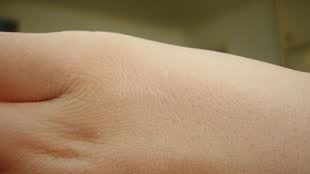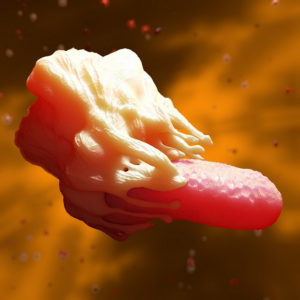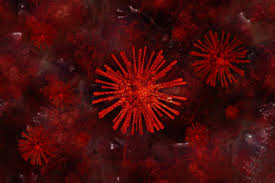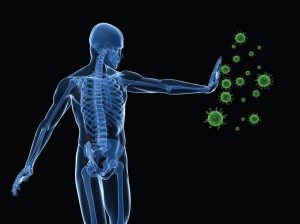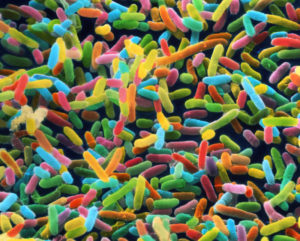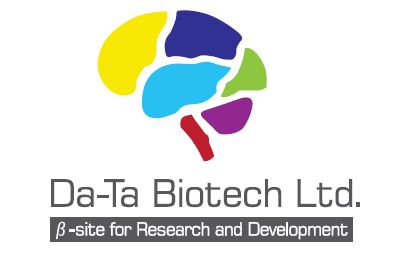Highlights
- •CARD14 signaling directly regulates MYC in keratinocytes to promote barrier homeostasis
- •Pathogenic genetic variants dysregulate CARD14-MYC signaling, promoting barrier dysfunction
- •Skin barrier function remains intact in the context of complete CARD14 deficiency
- •The CARD14-MYC mechanism may contribute to diseases beyond the epidermis
Summary
Caspase recruitment domain family member 14 (CARD14) and its variants are associated with both atopic dermatitis (AD) and psoriasis, but their mechanistic impact on skin barrier homeostasis is largely unknown. CARD14 is known to signal via NF-κB; however, CARD14-NF-κB signaling does not fully explain the heterogeneity of CARD14-driven disease. Here, we describe a direct interaction between CARD14 and MYC and show that CARD14 signals through MYC in keratinocytes to coordinate skin barrier homeostasis. CARD14 directly binds MYC and influences barrier formation in an MYC-dependent fashion, and this mechanism is undermined by disease-associated CARD14 variants. These studies establish a paradigm that CARD14 activation regulates skin barrier function by two distinct mechanisms, including activating NF-κB to bolster the antimicrobial (chemical) barrier and stimulating MYC to bolster the physical barrier. Finally, we show that CARD14-dependent MYC signaling occurs in other epithelia, expanding the impact of our findings beyond the skin.
Introduction
Atopic dermatitis (AD) impacts nearly 20% of children worldwide and portends the development of other allergic diseases via the atopic march.
Skin barrier dysfunction is a key pathogenic contributor to AD; the transcutaneous passage of allergens through a leaky epidermal barrier promotes the sensitization and local inflammation that primes local and distal allergic disease.
Barrier dysfunction also underlies other epithelial diseases (e.g., psoriasis, food allergy) and even systemic autoimmune diseases,
and the extent of dysfunction correlates with disease severity.
,
Understanding the mechanisms underlying epithelial barrier homeostasis and dysfunction is thus crucial for developing novel strategies for the prevention and treatment of not only a spectrum of human skin diseases but also a wide range of pathologies in other epithelia.
Barrier homeostasis relies on a coordinated balance between the proliferation and differentiation of epithelial cells. Within the skin, proliferating basal keratinocytes repopulate the epidermis, while suprabasal differentiation gives rise to the structural components required for an optimally protective barrier. On such protein is filaggrin (FLG)
; reduced FLG is associated with barrier dysfunction and is a significant risk factor for AD and atopy.
,
Our group recently identified the signaling protein caspase recruitment domain family member 14 (CARD14) and its common missense variant rs11652075 (C>T, p.R820W, minor allele frequency [MAF] = 0.477) as FLG regulators in a genome-wide association study (GWAS) of the Mechanisms of Progression of Atopic Dermatitis to Asthma in Children (MPAACH) cohort, the first US-based cohort of children with AD.
CARD14 is expressed in epithelial and mucosal tissues.
Canonically, activated CARD14 recruits B cell lymphoma/leukemia 10 and mucosa-associated lymphoid tissue lymphoma translocation protein 1 (MALT1) to form a “CBM complex” that induces nuclear factor κB (NF-κB) and MAPK signaling.
Importantly, CARD14 and its genetic variants, although rare, are implicated in the pathogenesis of AD, psoriasis, and other inflammatory skin diseases.
,
Despite these strong associations, the breadth of the impact of CARD14 and its variants on epithelial homeostasis, as well as the underlying mechanisms, are not fully understood.
Here, we demonstrate an MYC regulatory pathway whereby CARD14 is a direct regulator of MYC, and that disease-associated CARD14 variants perturb this mechanism in keratinocytes to promote skin barrier dysfunction. Consistent with the known roles of MYC in the skin,
we further demonstrate that the CBM and CARD14 variants influence keratinocyte proliferation, epidermal differentiation, and skin barrier function. Finally, we provide evidence that the CARD14-MYC pathway may contribute to barrier homeostasis and disease pathogenesis in other CARD14-expressing epithelia (i.e., esophageal, nasal and airway epithelia), thus extending the impact of our findings beyond the epidermis.
Results
The AD-associated R820W variant, like other disease-associated CARD14 variants, affects NF-κB signaling
Using the expanded MPAACH cohort with known CARD14 rs11652075 genotypes, we confirmed our previous finding
that the T allele (TT), which encodes the CARD14 R820W substitution, is associated with reduced FLG in non-lesional (NL) skin (Figure 1A; Table S1). However, the mechanisms underlying this association are largely unknown. Despite its frequency, strong evolutionary conservation of basic amino acid residues at the 820 position and multiple algorithms suggest intolerance to the R820W substitution (Figure S1A; Table S2).
,
,
,
Two other CARD14 mutations (I593T and N737H) have been associated with AD and have hypomorphic effects on NF-κB signaling
; thus, we hypothesized that R820W behaves similarly. To test this, we examined the mRNA expression level of the antimicrobial peptide (AMP) gene S100A8,
a known CARD14-NF-κB target gene, in the NL skin of individuals homozygous for the TT genotype vs. the CC or CT genotypes, and found reduced mRNA expression levels in TT individuals (Figure 1B). Further supporting the hypothesis that R820W has a hypomorphic effect on NF-κB signaling, NF-κB luciferase reporter assays showed reduced NF-κB activation by CARD14 constructs expressing the R820W protein compared to WT protein (Figure 1C). As expected, CARD14 constructs expressing R820W elicited less NF-κB activity than those expressing the psoriasis-associated
gain-of-function (GoF) mutation E138A. Notably, R820W protein elicited more NF-κB activity than CARD14 harboring either of the AD-associated hypomorphic N737H and I593T mutations. These data show that within a spectrum of functional CARD14 variants, the R820W variant has a hypomorphic effect on NF-κB signaling with respect to WT.

